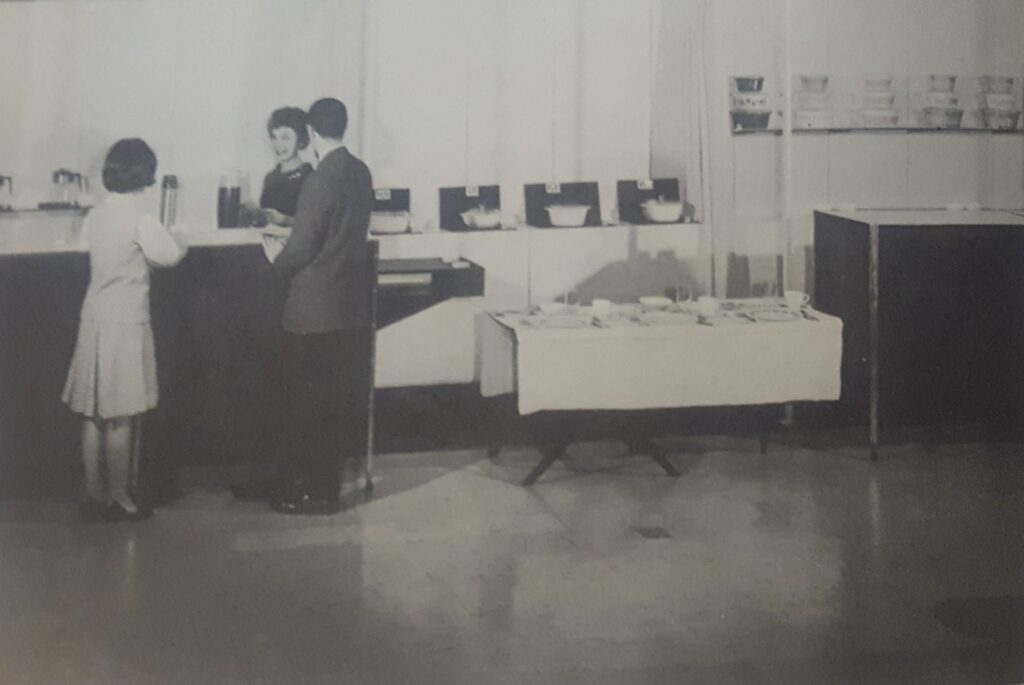The following is a summary of interesting Pyrex facts found in the publication above:
Regarding the 200-inch Pyrex disk: “Twenty years and $6,550,000 went into building the big disk and placing it in the giant Hale telescope at Palomar Mountain… Only glass could meet the exacting specification for the Palomar mirror, whose curvature must never change more than two-millionths of an inch… The great glass wheel was held at 1200 degrees F for sixty days, then cooled over eight months at the rate of barely one degree a day… the finished, steel-crated disk was shipped… there the disk was ground and polished… a very thin film of aluminum “steamed” onto the glass, turned the opaque disk into the world’s largest mirror… Mounted in the Hale telescope, the huge mirror’s job is not to magnify but to collect starlight from the faintest objects in the heavens— four times as much light as any previous telescope. No one “looks” into the mirror except the operator of the telescope’s camera…”
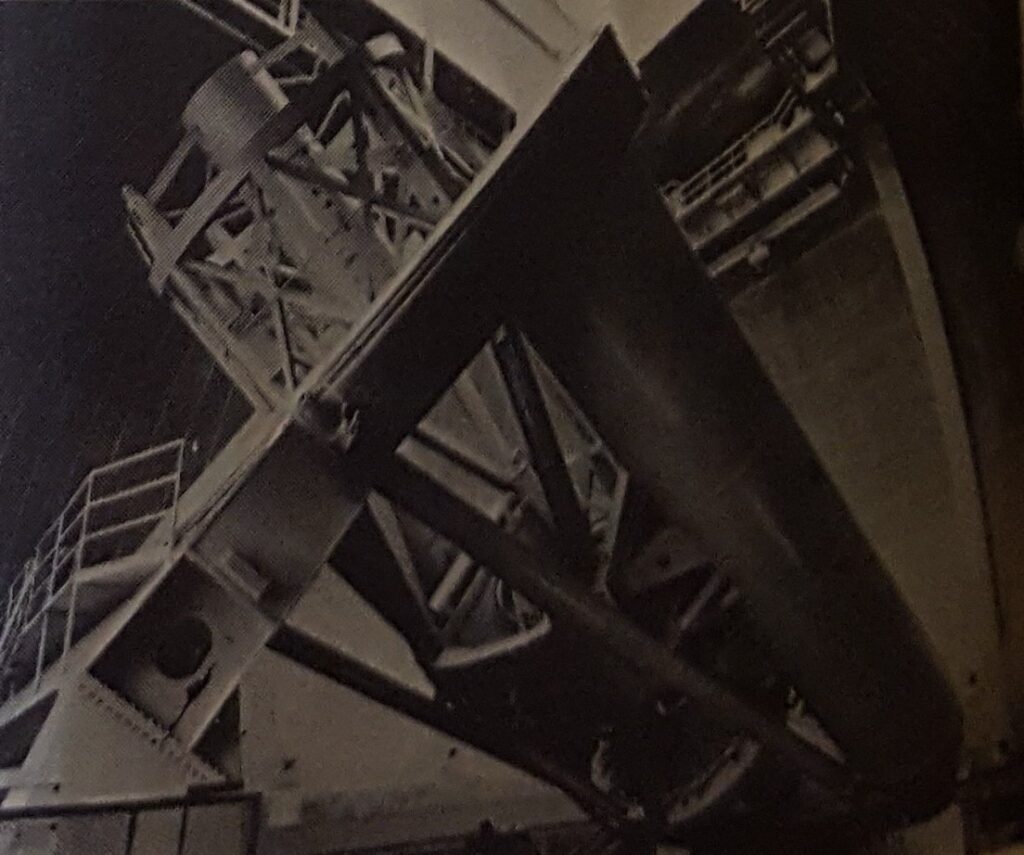
“Glass spectroscopes have enabled astronomers, by analyzing the light of the most distant stars, to determine that our universe is expanding at unimaginable speed; the glass lenses and mirrors of modern telescopes probe up to six sextillion miles into the infinite vastness of space.
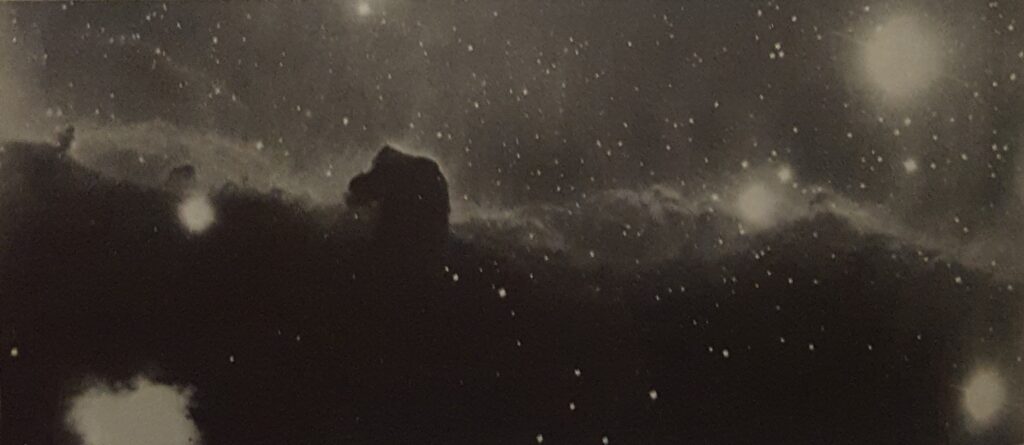
Regarding types of glass: Borosilicate glass resists heat and chemical corrosion, has good electrical properties. Its uses include glass ovenware, laboratory glass, industrial piping and pumps; it was also used for the 200-inch disk. Below is 96% silica glass, a special, re-treated borosilicate glass. It can be heated cherry-red, then plunged into ice-water without breaking and has high chemical resistance.
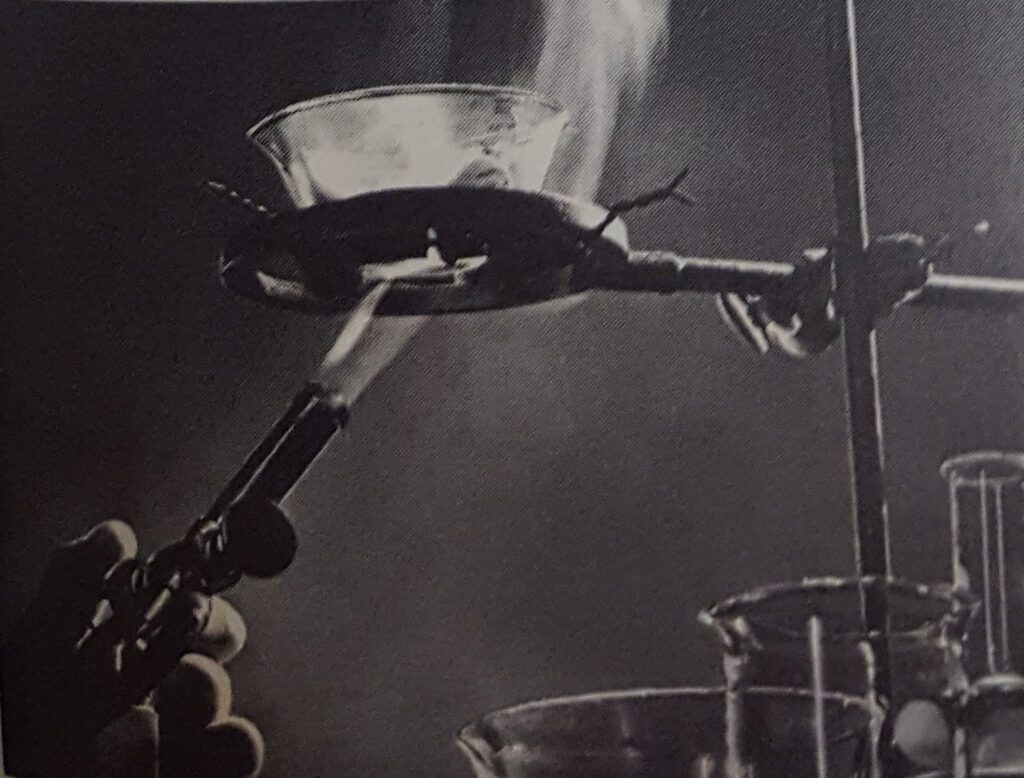
Regarding Pyroceram and Glass Ceramics: “We think of glass as softer than metal, yet new Pyroceram brand materials, developed at Corning, have scratched steel and brass plates… Corning’s research scientists have developed, since 1957, an entire family of new materials made from glass, so radically different that they aren’t even glass any more. This family of new materials has been converted into crystalline ceramics from their original glassy state by the use of nucleating agents and heat treatments. A glass batch containing a suitable nucleating agent is melted and formed into a transparent glass article by conventional glassmaking techniques. The article is cooled inducing precipitation of the nucleating agent. Additional heat treatment results in crystallization. the result is a close-grained, super-hard crystalline material, of a kind never seen in the universe before. It has been made in well over 3,000 varieties, each with a special combination of carefully controlled properties, and all capable of being mass-produced in any shape glass can assume. Glass ceramics were created in answer to modern science and industry’s demand for materials that can withstand ever-higher speeds and temperatures. One of these materials is now used in the Pyreceram radome (nose cones) of supersonic missiles as illustrated above; its extremely fine crystal structure enables it to resist acceleration temperatures up to 2200 degrees F. Different types of glass ceramics will expand, shrink, or remain exactly the same size under heat. One type stands ups to acid solutions that destroy steel, copper, and aluminum. Some types have electrical insulation properties, superior to most ceramics. Some will withstand stresses of 26,000 pounds per square inch. Still others are harder than hardened steel, flint or granite. Glass ceramics can be made transparent, white, or in color. Their uses in industry and the home are almost limitless: atomic reactor parts, supersonic airplane (and space ship) construction parts, fireproof curtain walls, and no-burn saucepans.”
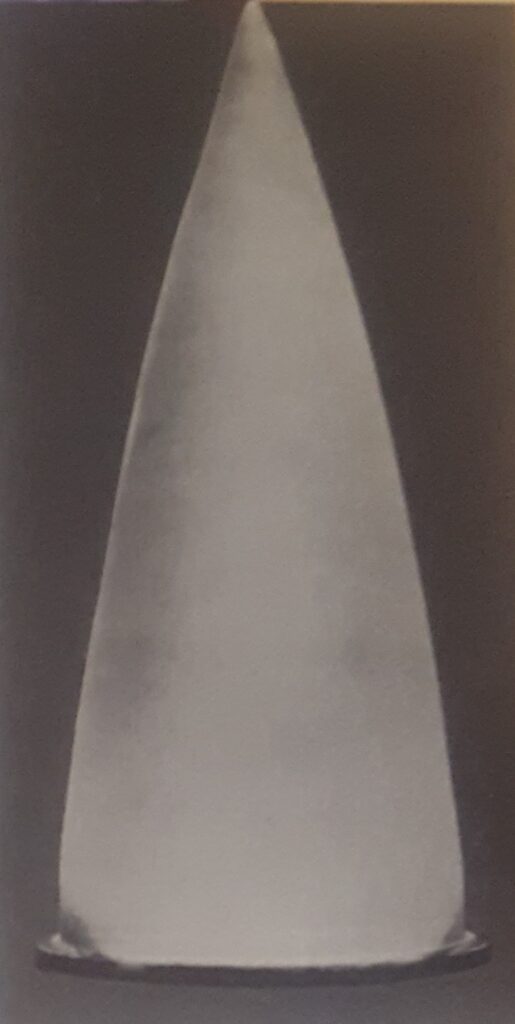
Regarding consumer research: “To help manufacture even better glass for living, the Hall of Science and Industry includes another unique feature; the market research opinion center. At the market research opinion center, visitors to the Glass Center can take a hand in the design, colors, shapes, and sizes of old and new lines of glass tableware and kitchenware. Many of these lines have not yet been put on sale, giving visitors a preview of tomorrow’s good news in glass. Their reactions are passed on to Corning’s design and sales departments; the visitor has a real say in the appearance of these products, for experts have found that there is an amazing consistency between these opinion samples and actual customer demand through the nation. Visitors to the Glass Center really do represent a cross-section of America.”
